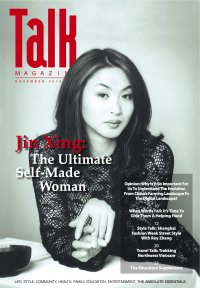The Luxgen L7 – Can Genius And Luxury Really Be Combined?

Despite Luxgen being a name that few will be familiar with, not only is the brand on sale in a number of countries, but also last year, the L7 was the 20th best selling SUV in China. Parent group, Yulon, is a Taiwanese powerhouse that got their start license producing Nissans. Luxgen was formed in 2009 and is a new attempt (a 1980s one proving unsuccessful) at producing their own cars. Since 2011 they have been manufactured in China as a joint venture with partner company Dongfeng.
The L7 was their first model to hit the market and is rapidly being joined by a growing range. Design wise, it is a medium sized SUV with modern, albeit slightly generic look. Whilst the general panel fit is fine, the bumpers are not attached to the rest of the body particularly well.
For a brand whose name is supposedly a combination of ‘luxury’ and ‘genius’, you would expect more from the interior quality. Not only is it far below the standards of other joint ventures, it is worse than some domestic Chinese brands. Hard plastics dominate the design and the materials are badly put together; the leather trim over the door handles is loose and the plastic inlay on the steering wheel flimsy.
Technology, however, is this car’s forte and it puts many luxury manufacturers to shame. Despite not being touch controllable, the screen is a massive 10.2 inches and is key to many of the systems. Probably the best feature of the lot is Eagle View which provides a 360° view around the car with a depth of two metres, making parking an absolute cinch.

When the indicator lights are selected, the screen displays a view of the rear blind spot. There is also a night vision system although we were unable to test it. All this is backed up by a call centre system (Chinese only) similar to General Motors’ OnStar, which can offer assistance and input destinations into the GPS.
In the rear, there is ample space for three passengers but, unluckily, the middle traveller does not get a full seat belt. Rear seats can be moved forwards and backwards but do not appear to fold flat as well as they should. The boot opens and closes electrically and is capacious.
One of the first things you notice when driving the car is that the leather, electrically adjustable seat is quite hard. On the move, the 2.2 litre turbo engine is more than capable and gives a spirited performance. The five-speed automatic transmission proves unobtrusive but we failed to test the semi manual function (controlled by the gearbox as there are no paddle shifts).
Buttons near the gear selector control the 4WD function with most of the time power going into the front wheels. Whilst we didn’t test the car off road, the suspension was poor at soaking up bumps and offered a fairly hard ride.
Despite a slightly artificial feel to the steering, it was generally well weighted and the overall handling of the car was good with limited body roll. At speeds above 60km/h the lane departure warning system activates and proves to be good at indicating unintentional straying from the lane via way of sounding a buzzer.
There is a lot to like about this car. It is good looking and packs some great technology while offering a reasonable drive. However, the quality issues are hard to overlook. Prices range from RMB 188,000 to RMB 268,000.

